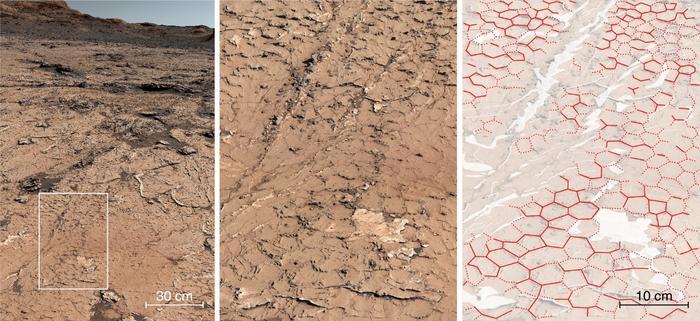Scientists have discovered deposits of salts forming a hexagonal pattern in sedimentary layers dating from 3.8 to 3.6 billion years ago on the Red Planet, saying that the new evidence indicates an environment conducive to the emergence of life.
Since 2012, NASA's Curiosity, the first rover to ever explore such ancient remains, has already detected the presence of simple organic molecules which can be formed by geological as well as biological processes.
However, the emergence of primitive life forms, as hypothesised by scientists, initially requires environmental conditions favourable to the spontaneous organisation of these molecules into complex organic compounds.

Such conditions are precisely what have been discovered by a research team from the French space agency CNES and the French National Centre for Scientific Research (CNRS), together with their US and Canadian colleagues.
Using the Mastcam1 and the ChemCam2 instruments on Curiosity, they discovered deposits of salts dating from 3.8 to 3.6 billion years ago.
Similar to the hexagons observed in terrestrial basins that dry out seasonally, they are the first fossil evidence of a sustained, cyclical, regular Martian climate with dry and wet seasons.
"By letting molecules repeatedly interact at different concentrations, independent laboratory experiments have shown that this kind of environment provides the ideal conditions for the formation of complex precursor and constituent compounds of life, such as RNA," the researchers wrote in a paper published in the journal Nature.

These new observations should enable scientists to take a fresh look at the large-scale images obtained from orbit, which have already identified numerous terrains with a similar composition.
"They now know where to look for traces of the natural processes that gave rise to life, of which no vestiges remain on Earth," the authors wrote.
(With inputs from IANS)
Related:
Space: Scientists unearth remains of modern glacier near Mars' equator
Space: NASA's Curiosity rover spots first 'crepuscular rays' on Mars

















